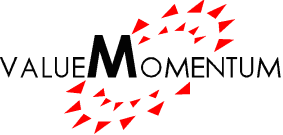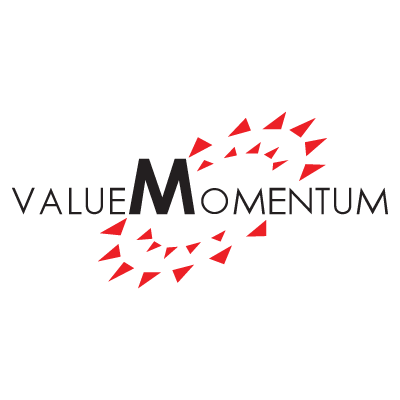The insurance industry has traditionally relied on manual QA testing for quality assurance (QA) of their systems and applications. As customer demands and AI/Machine Learning technologies rapidly evolve, insurers face pressure to transform their testing capacities as well as their overall QA approach. For many, this means adopting software testing automation and implementing a robust quality assurance and quality engineering (QE) strategy that combines both automation and continuous testing. With the growing emphasis on faster releases and Agile Methodology, forward-thinking insurers are moving away from viewing testing as a tactical late-stage function and incorporating testing at every stage of the software development lifecycle.
To understand how an insurer can transition from a traditional testing model to a strategic QA/QE model, let’s take a look at the approaches taken by Pekin Insurance and NJM Insurance Group.
Complete Core System Transformation Approach
In March of 2017, Pekin Insurance began an enterprise-wide transformation to implement a new policy administration system and modernize their core, data, analytics, and cloud technologies. Integral to this transformation was developing an enterprise QA/QE strategy that incorporated modern software development practices like continuous integration/continuous development (CI/CD), DevOps, and an Agile model. In practice, Pekin sought to deliver weekly software releases that required QA automation and continuous testing.
Today, the insurer’s QA/QE strategy is built on a model with three fundamental pillars: continuous assessment, continuous collaboration, and continuous automated testing. This enables the secure extension of features and functionalities to their distributors and policyholders, allowing the flexibility to meet customer demands anytime and anywhere across digital channels. Through this complete overhaul, Pekin was able to significantly reduce their technology debt, maximize their day-to-day operations with internal teams, and open doors to new markets.
Incremental Approach
NJM has long been focused on enterprise-wide continuous improvement. The insurer began its core and digital transformation journey a decade ago, starting with the formation of a software process improvement group and the adoption of Agile tools a couple years later. Along with this group, NJM established an all-in quality ethos, where every employee in IT was responsible to continuously infuse quality. As part of this initiative, IT undertook a multi-year effort to train all stakeholders on basic software delivery concepts and continuous improvement approaches, including QA automation.
The company also evolved testing to adopt an automation-first approach throughout the entire transformation journey. This included embracing leading open-source test automation tools/platforms such as Selenium, Appium, and Sauce Labs.
Now, NJM operates on the assumption that automated testing is the default option while manual testing is only a supplement. Automation also begins on Day 1 within a Sprint. The insurer is also moving swiftly toward adopting CI/CD and DevOps practices and plans to continue expanding its capabilities in these areas.
3 Key Ingredients for Insurance QA/QE Modernization Success
Both insurers embraced three key ingredients to modernize their QA/QE strategy:

-
Test Everything, All the Time.
While testing is frequently considered in relation to the software solution being delivered—such policy admin or claims–modern QA practices call for testing all of the components a core system is integrated with or is affected by. In other words, continuous automated testing must also be applied to infrastructure. Regardless of whether that infrastructure is on-premise or cloud-based (IaaS), every update or upgrade alters the infrastructure and requires testing to validate the change. Similarly, as core systems increasingly interact with external solutions and ecosystems via APIs, each of these integrations also require ongoing testing and management.
-
Identify and Cultivate Appropriate Internal Expertise.
In addition to partnering, insurers must assess their internal expertise and make ongoing enhancements as and when required. Teams should include both internal employees and resources from partners to make sure knowledge transfer happens continuously. As appropriate, team members can be rotated to broaden everyone’s expertise. Whenever possible, internal employees should be positioned to take a lead role, or paired with an experienced external mentor for hands-on leadership training. To cultivate new talent and retain them full-time, insurers should consider hiring interns and rotate them across the IT department for holistic training, not just dedicating them to QA. This approach helps infuse the QA team with new and assertive individuals that are already familiar with the latest tools and QA processes.
-
Form Strategic QA Partnerships.
With the seismic shift in software development technology and testing approaches, forming strategic QA partnerships is critical to enable rapid time to market. The most advanced QA partners provide a dedicated onsite QA Lead to manage partner resources efficiently and ensure effective knowledge transfer to internal staff. Additionally, value-add partnerships assist with shifting organizational mindsets away from the historical perception of “testing” as a development afterthought to embracing continuous testing and its continuous integration across the development cycle.
Embracing agile, shift-left, automation, and CI/CD in a QA/QE strategy significantly helps insurance firms of any size to stay competitive in a fundamentally altered industry landscape. QA/QE modernization can also substantially help insurers mitigate the inherently risky process of transforming and continuously evolving core systems to address new market challenges and opportunities.
Learn about how we can help you modernize your QA processes by visiting our QualityLeap practice.


